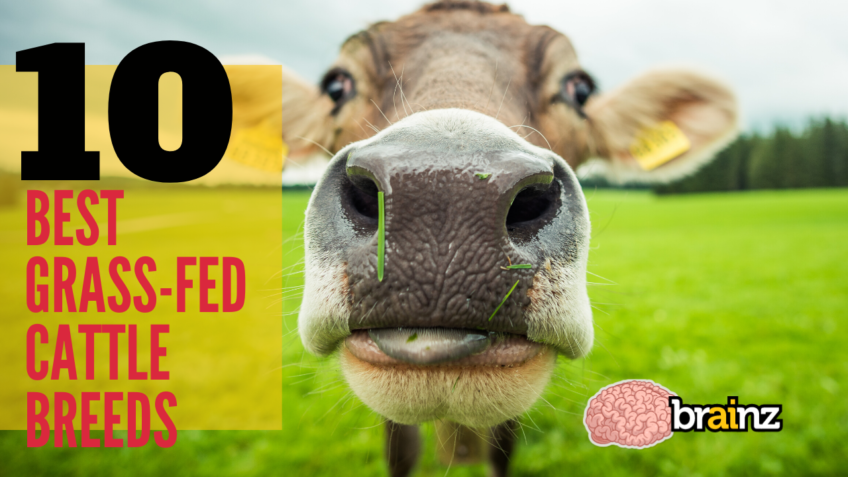The benefits of grass-fed beef are well-known by this time – leaner meat, lower risk of heart disease, healthier animals (which equals better quality meat). Conventionally-raised cattle are generally fed on a grain-based diet, including corn or other grains. That causes them to grow faster, fatter, and more profitably. But cows’ digestive system are not truly adapted to grain, making grain-fed cattle far less healthy. That filters down to the consumer.
What’s Does Grass-Fed and Grass-Finished Mean?
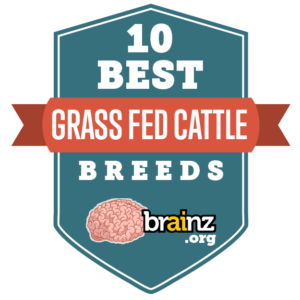
Grass-fed beef has become a staple of the supermarket meat counter, but just like “organic” before it, the term “grass-fed” has been marketed and watered-down to a shadow of its true meaning. There is no legal standard for “grass-fed,” which means that meat producers can freely use it as long as their cattle ate grass at some point.
That means the cows might have started out eating grass and transitioned to a more modern-conventional grain feeding to fatten them up before slaughter. They could have simply eaten grass supplemented with grain. At any rate, grass-fed does not mean exclusively grass-fed.
Grass-finished is the real holy grail – beef that is raised on a grass and grass-only diet, without the inflated growth of corn and other grain. They grow more slowly, have leaner meat, and are overall more healthy than even grass-fed cattle.
So whether you’re on a hard-core paleo or carnivore diet, or a foodie who appreciates the finer flavors and textures of real grass-fed, grass-finished beef, you know that grass-fed is the superior choice to grain-fed.
But what if you’re a cattle farmer or an aspiring cattle farmer interested in what breeds best lend themselves to a grass-finished life? That’s why Brainz is here with a survey of the best cattle breeds for grass-fed beef. Obviously, if you’re embarking on a new career raising grass-finished beef, don’t take our word for it; consult experts at your regional agriculture department, other farmers, and agricultural journals for information about what cattle are best suited to your climate, land, and commercial goals.
1. Red Devon
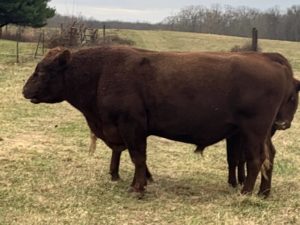
The Red Devon, also known as the Red Ruby or Devon Ruby, originated as a British breed, from Southwest England. The Red Devon is one of the best breeds of cattle for beef, and they are known to be incredibly resilient. The cattle are a tawny or rich red or burgundy color, which explains their name. Compared with other breeds, the Red Devon cattle has genetics that are one of the purest and of the highest quality, with qualities that include the fact that they are dual-purpose cattle, with milking ability and some of the best meat.
The Red Devon cattle are also adaptable, are docile with a great temperament, are good mothers and have a short calving cycle, and are known for their longevity and hardiness. They’ve been exported to destinations around the world. Their hardiness also means that they are effective at foraging, which contributes to the growth in their population. Some of the earliest examples may have included three animals that were delivered to Edward Winslow at Plymouth Colony in the New World in 1623.
2. Beefmaster Cattle
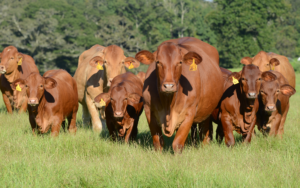
The Beefmaster cattle are a mixed Brahman-genetics with Shorthorn and Hereford, developed by Tom Lasater in the 1930’s. This hardy breed is ideal for the harsh climate extremes of Texas. The Beefmaster Cattle are one of the biggest and best breeds of beef cattle for grass-finishing, with the cows weighing in at 1,700 pounds and the bulls ranging upwards of 2,600+ pounds.
The Beefmaster breed is known for the six essential qualities, including fertility, conformation, milk production, weight, disposition, and hardiness. These cattle are usually reddish-rust in color, but some animals may have white spots or speckles. Their hardiness also goes so far as to make them resistant to most diseases and parasites. Health issues are uncommon with the Beefmaster cattle. The cows are fertile, birthing a calf every year on average and caring for their young. With such a range of highly lucrative and reliable qualities, the Beefmaster is also called “The Profit Breed.”
3. South Poll
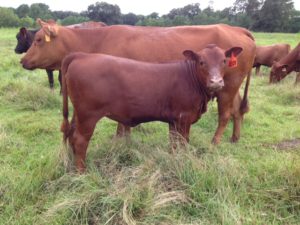
The South Poll cattle are an Alabama-based breed. It’s a cross between Red Angus, Hereford, Barzona, and Senepol. It’s a premier breed, with a relatively small frame, slick red or red-and-white coat, and an overall bred-in focus on heat tolerance. The South Poll cattle are one of the best beef cattle breeds, with a body of evidence that suggests that the meat South Poll cattle are at least as tender, and in some cases, more tender than English-bred cattle.
The cattle are high quality with a focus on longevity, high fertility, and calm demeanor. The South Poll cows have a great mothering instinct, with ease in calving, great udders, and a high degree of milking ability. They are also highly adaptable to their environments. Their average weight is 1,000 to 1,200 pounds. They are now popular in the Midwest and Southeast US.
4. Hereford
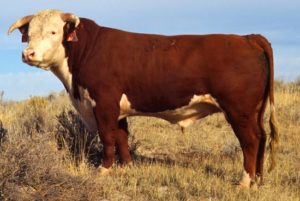
The Hereford cattle are a British breed, with origins in the county of Herefordshire. The name of the breed is after the cathedral city of Hereford, which is known for the cattle, as well as for the cider and fruit production. The Hereford cattle are known as one of the best cattle breeds, with more than five million purebred cattle now located in more than 50 countries around the world. They were first exported to Kentucky in 1817, but they are now found in South America, Canada, Mexico, Israel, Japan, Australia, and beyond.
The Hereford cattle are hearty, with foraging abilities and a longevity ranging to 15+ years. They are also a popular breed because of the lower overall costs for management. The bull can weigh upwards of 1,800 pounds, while the cow is 1,200 pounds. They are red-and white in color, with white horns (there is a Polled Hereford variant as well).
5. Aberdeen Angus
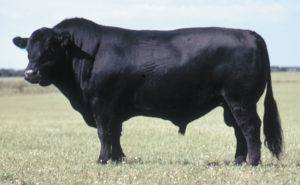
The Aberdeen Angus cattle, also known as just Angus or Doddies or Hummlies, are a British breed of cattle, originating from the area of Angus and Aberdeen counties in North Eastern Scotland in the 16th century. The Aberdeen Angus is considered to be one of the best breeds of cattle, because of the focused breeding over the centuries. It was named as the UK’s most popular beef brand (native), but also the overall 2nd popular beef cattle.
The beef has also been at the center of a PR blitz since the early 2000’s, with grocery stores and fast-food restaurants promoting the superiority of the Angus beef, with such great success in the US that the publicity and promotional effect has spread around the world, with the “Certified Angus Beef” labelling. The focus was on the quality and on the hardiness of the Aberdeen Angus cattle, since they had to survive harsh winter conditions. They are solid red or black (more original), but the udder may be white. The Angus cattle are naturally polled. Cows range upwards of 1,200 pounds, while bulls weight 1,800 pounds.
6. Black Baldy
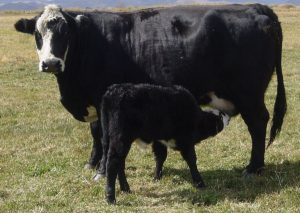
The term “Black Baldy” cattle technically refers to any crossbred animal that is black with a white face. The term is most common in New Zealand and Australia. The cattle are sometimes referred to as “Black Whiteface.” Most commonly, however, the Black Baldy breed is known to be the result of a cross between an Angus and a Hereford. The Black Baldy is one of the best cattle breeds for grass fed beef. The Black Hereford, which is found in the British Isles, is similar in appearance to the Black Baldy.
The Black Baldy cows have good mothering skills and tend to have a good temperament and docile nature, with vigor. This breed is popular with benefits that include fertility, adaptability, longevity, efficiency, good calf survival rate, good growth rate, and profitability. Their black skin also makes the breed particularly well adapted to warmer, sunnier climates, where sunburn might otherwise be a consideration. As a cross-breed, Black Baldy cattle can also benefit from the hype and popularity of the Black Angus marketing success.
7. Simmental
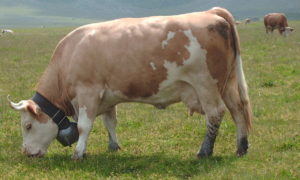
The Simmental cattle, also known as Swiss Fleckvieh, are a Swiss breed. The name of these cattle comes from the Simme River Valley, Simmental. They have been used for dairy, but the Simmental cattle are the best breed of cattle for meat as well. So, they are considered dual-purpose cattle, raised for milk and meat. They are recognized for their reddish color, with white markings, although gold-and-white coloration is possible. The face is often white. The Simmental breed has a small to moderate-frame.
The Simmental breed is known for the growth patterns of their young, though that trait relies on sufficient nutrition/feed. They have a higher than average yield of milk and growth comparatively. First recorded in the Middle Ages, this breed has been exported to destinations around the world including Africa and Russia. The Simmental has also contributed to some of the most well-known European breeds.
8. Charolais
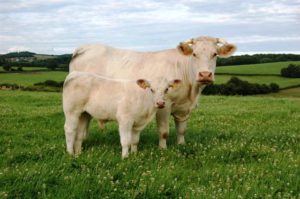
The Charolais cattle, also known as the Charolaise, are a French breed of cattle that is a naturally horned beef breed. They originated in Charolles in Central or Eastern France, but they are now often found on farms in Ireland. The breed was known for high-quality meat even as far back as the 16th and 17th centuries. They are white or cream in color, with broad chests. The light color can be an issue, since the Charolais cattle can be susceptible to sunburn in areas of the world where there is an overabundance of sunlight.
These white cattle have also influenced the North American beef industry more than any other. If you’re wondering what breed of cattle produces the best beef, the Charolais cattle are certainly one of the best. The Charolais beef is a superior product. They are highly adaptable and sturdy, with the ability to survive and thrive in harsh and foreboding environments. Their sturdy make-up also makes them ideal grazing animals, while they are able to effectively convert feed to muscle without issue. Their temperament lands on the more aggressive side, with cows being fiercely protective of their young due to the strong mothering instinct. Bulls are also aggressive. Due to the large size of the Charolais cattle, birthing is typically uncomplicated.
9. Shorthorn
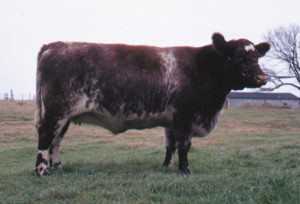
The Shorthorn cattle originated as British beef, from the North East of England dating back to the 18th century. They were bred for dairy, but the Shorthorn cattle are also dual-purpose. These cattle are one of the best breeds of cattle for beef. They are efficient, with a short, intense period for beef production. The Shorthorn cows are docile, easy to milk, and very manageable. They are also profitable for dairy cattle, with some cows producing up to 5 lactations, at a rate of 2,200 gallons per lactation. They also have strong mothering instincts, which can cause a fiercer defense to kick in, despite their normally even-keel temperament. They can be polled or horned, which makes them a safer and more manageable solution. The Shorthorn have a low-set body, with a good, solid structure.
They fall into a medium size range. The bulls can weight 2,100 pounds, while the cows weight 1,700 pounds. Combined with the moderate frame, these cattle are sturdy and adaptable, known for longevity. They are also resistant to disease, with a robust immune system. They are grazers, which contributes to the efficiency and growth capabilities. Studies indicate that the Shorthorn has the lowest feed cost, based on weight. Within the bloodline, there is an emphasis of one quality or another: Beef Shorthorn and Milking Shorthorn. They are also bred with the black Galloway cattle for the Blue Grey roan cattle. While the coat can be roan, red, or white, some Shorthorn are completely white.
10. Galloway
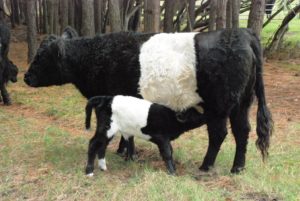
The Galloway cattle are black-and-white in color (although they can also be red or dun). They are one of the breeds that has been around since it was first established in Scotland in the 17th century. Their coloring leads to a nickname of the “Oreo Cows,” while their name is also shortened to “Belties.” The black skin also protects the Galloway cattle from the adverse effects of the sun and sunburn. The cow ranges upwards of 1,000+ pounds, while the bull is 1,700 pounds. The calves are also born at 75 pounds, a healthy birth weight. As adults, their wavy/curly coat is so thick that they naturally have lower fat for their outer layer. The benefits of their coat are multiple. Beyond warmth, and decreasing the need for a fatty layer, it is a protection, a rain slick, and an adaptation benefit for variant temperature (they shed the coat in the summer if needed).
The Galloway cattle are known as one of the best breeds of beef cattle, with exports found around the world. While not in wide use for dairy, some Galloway herds are sometimes used for milking and cheese production. The Belted Galloway is a genetic version of the Galloway breed. They are naturally polled, which is a benefit from a safety perspective, as well as removing much of the hassle in managing the herd. They are also a healthy breed, with resistance to diseases. They were very popular in the 1950’s, but that success has subsided somewhat. Demands for beef has led to an increase I popularity in more recent years. Still, the Galloway cattle are considered “rare” with fewer than 10,000 cattle in herds around the world. The Livestock Conservancy has flagged the Galloway as a breed to “watch.”
Related:
15 Hacks to Improve Your Life as an Adult

